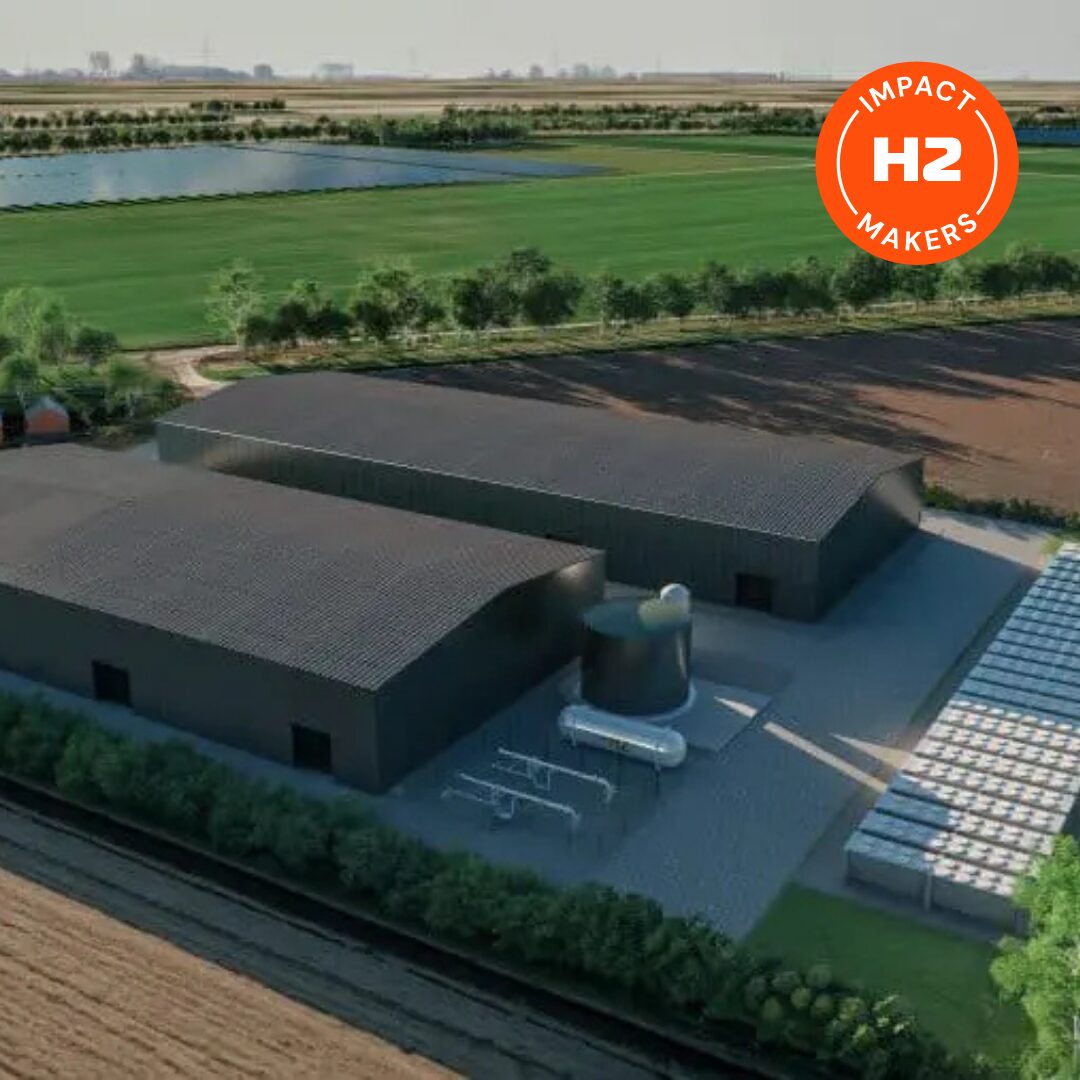H2 Impact Makers: H2XP’s Tamara Koeman
What inspired you to start this hydrogen project and what motivates you to keep going?
“After developing our three large solar parks with a combined output of 100 MWp in the Rilland/Woensdrecht energy landscape we saw an opportunity to develop a 70 MWe green hydrogen electrolyser in the same area. The presence of our extant 2 x 40 MW grid connections near Stedin’s medium-voltage substation and Tennet’s high-voltage substation, our own solar parks, an Evides water mains, an existing hydrogen pipeline and the future HyNetwork Services backbone make this area supremely suitable for the development of a green hydrogen electrolyser. This is a unique development with ample support as the Provincial Government of Noord-Brabant and the Municipality of Woensdrecht have granted us the opportunity to replace a large pig barn. Moreover we are examining the options for transporting our residual oxygen to the Brabantse Delta water authority’s nearby water treatment plant.
Although we have recently faced a number of challenges, the many positive responses we receive with regard to this project are what motivate me personally. And thankfully that means we always manage to find a solution to every challenge!”
Which challenges did you encounter during this project and how did you overcome them?
Initially we started this project at a disused agricultural construction plot in the middle of our solar parks in the Province of Zeeland. Although there was plenty of support from the Municipality of Reimerswaal, nearby greenhouse horticulturalists, the water treatment plant and neighbours, the development of a hydrogen electrolyser in an agricultural construction plot was not in line with the Provincial Government of Zeeland’s environmental ordinance. Luckily, we then discovered an agricultural location in the Province of Noord-Brabant and the prospective development suits this province’s environmental ordinance!
Because we intend to develop a hydrogen electrolyser in a rural area we cannot discharge our waste water into the sewers (there are none). In the end, the solution was to thermically evaporate our waste water flow using residual heat from our system and then remove the concentrate using tankers. This extremely innovative solution was discovered after a lengthy search.

What is, in your opinion, the biggest contribution this project makes to the transition to a sustainable hydrogen economy?
“This project highlights how important decentralised green hydrogen electrolysers can be to the hydrogen economy in the Netherlands. Decentralised electrolysers can prevent local grid congestion and the residuals such as oxygen and heat can provide added value for, for example, nearby waste water treatment plants as well as greenhouse horticulture.
The proximity to hydrogen pipelines means our hydrogen can be transported to industrial buyers. This demands a re-think from the responsible authorities. However, this project proves developing a hydrogen electrolyser in a rural-agricultural setting is a good option.”
Which support or cooperation played a crucial role in your project’s success?
Support from the Provincial Government of Noord-Brabant and the Municipality of Woensdrecht. Receiving a TSE subsidy which provided funding for the majority of our development costs.
Because we are a small team, we can respond quickly, adequately and flexibly to these complex developments. This demands crucial, long-term collaboration with our cooperation partners including Sweco, Equans, Evides, Stedin, Loyens en Loef and Q.G.M.
How do you view hydrogen’s future and what do you hope your project can contribute to this?
“Our mission is to be producing 10% of the Netherlands’ green hydrogen in 2030. We expect this green hydrogen to primarily be transported using HyNetwork Services’ pipeline to heavy industry to replace grey hydrogen. At a later stage, major gas buyers will be provided with green hydrogen using local hydrogen networks and heavy transport companies will be able to acquire it from petrol stations. Our project can play a wonderful role by providing green hydrogen to the heavier industries in the Smart Delta Regio.”
About this project: The project received €380,000 (TSE Industrie Studies). For further information on this project.




